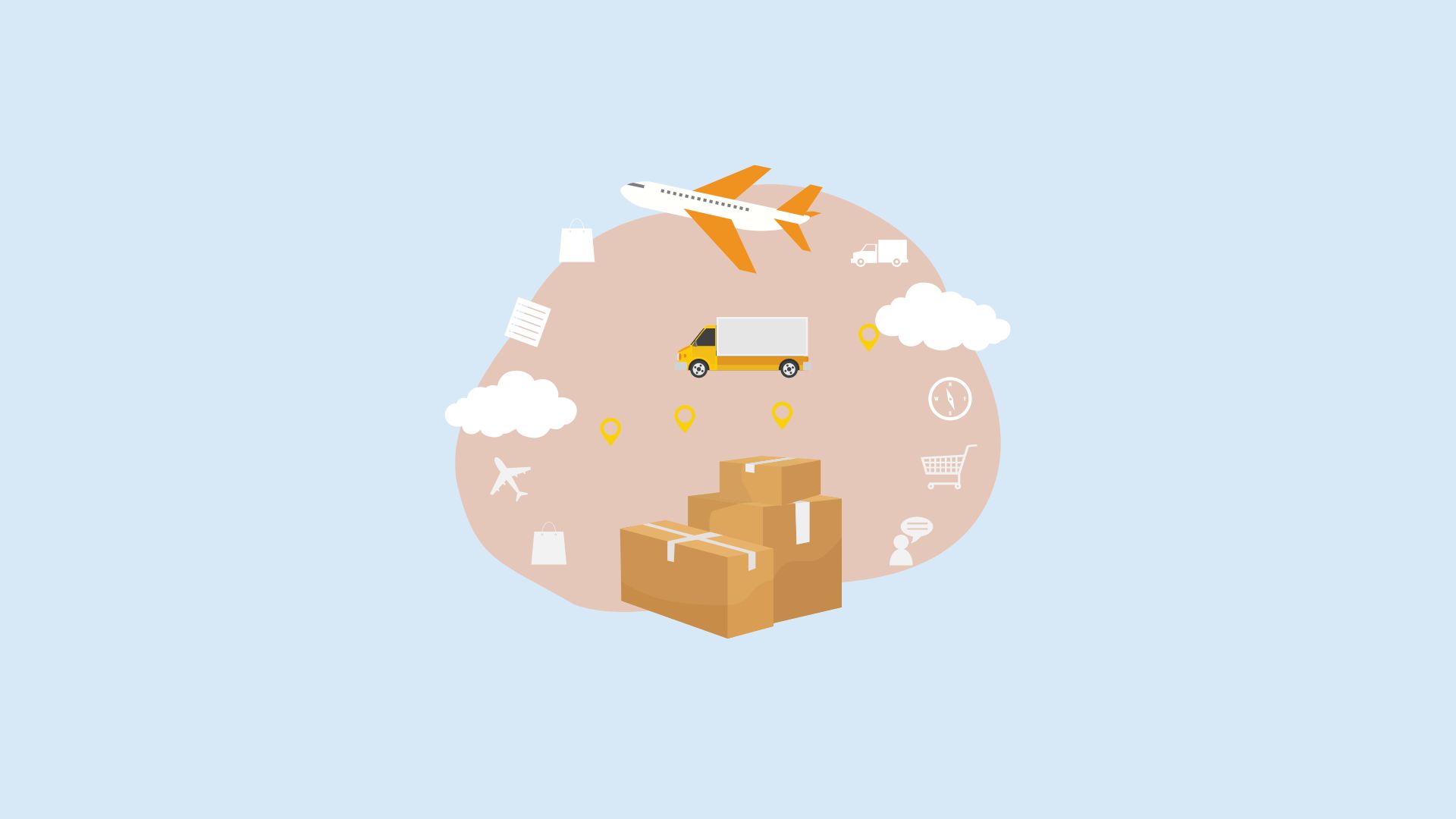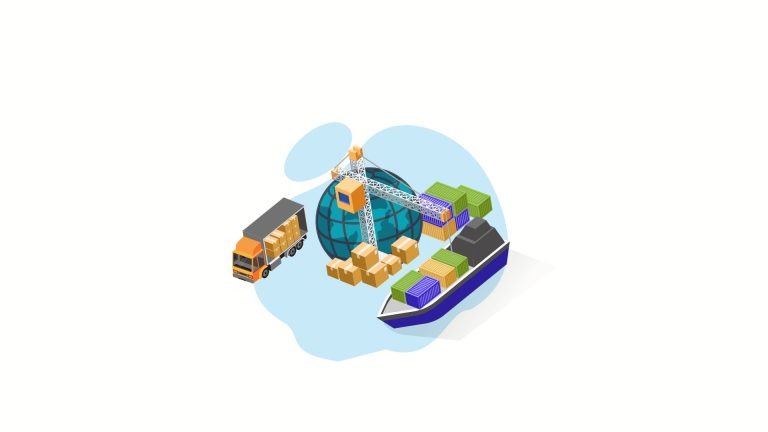Welcome to another Logistics News Update.
Last week, China zeroed all duties from any African country.
As we know, it’s the Chinese that pay but what this does is make us much more competitive when we are up against South America for example, the advantage is at least 5 to 30%. With talks going on between China and the USA, this is a big win for Africa and South African products, especially agricultural exports like citrus, wine, nuts, grapes, and wool, can now enter China duty-free. Before this, these goods were subject to tariffs of 10–30%, depending on the category. Removing those costs makes South African goods more price-competitive, opening the door for higher export volumes into the world’s largest consumer market.
Let’s Learn: HS Codes: Why Getting It Wrong Costs You
Every product that crosses a border needs a Harmonised System (HS) Code. It’s a standardised international number that tells customs what your item is, how much duty to charge, and whether any special permits apply. Getting it wrong isn’t just an admin error. It can lead to delays, penalties, or unnecessary duties. For example, misclassifying a product as a finished item instead of a component could bump your duty rate from 5% to 20%. That adds up fast. If you’re unsure which code applies, speak to your clearing agent or freight partner before submitting your documents. A five-minute check can save you weeks of headaches.
Tip: SARS has an online tariff tool if you want to look it up yourself but always cross-check with a pro if you’re not sure.
NEWS
US–South Africa chicken deal signals potential for fruit trade
Source: Fruitnet

US–South Africa agree poultry deal, fruit exporters hopeful next
Johannesburg, South Africa – 17 June 2025 – South Africa and the United States have reached a deal under the African Growth and Opportunity Act (AGOA), opening a quota for bone-in US chicken imports into South Africa. The agreement takes effect immediately, with gradual increases over the coming years.
Domestic poultry producers have welcomed the move as a compromise—with anti-dumping duties retained on volumes beyond the agreed quota—seeking to protect the local industry from excessive import pressure. South Africa called it a “win-win” outcome, balancing consumer access to lower-priced chicken with measures to safeguard domestic producers
The deal follows the recent renewal of AGOA benefits and signals stronger trade ties between the two nations. It also raises hope among fruit exporters. The fruit sector—particularly citrus, table grapes, and other fresh produce—has long faced tariffs and non-tariff barriers entering the US. With the groundwork laid in poultry, many believe fruit could be next.
Why it matters:
- Consumer impact: Lower-cost US chicken may help reduce food inflation.
- Industry protection: Anti-dumping duties remain in place for excess imports.
- Trade ripple: The poultry‑deal template could pave the way for a similar arrangement in fresh fruit.
What comes next:
Fruit exporters will be watching closely and likely pushing for a follow-up agreement. They’re aiming for reduced tariffs and regulatory hurdles to tap into the US market under a similar quota-based framework. Much depends on continued negotiations, regulatory alignment, and maintaining momentum with US trade authorities. Source: Fruitnet
SAAFF Launches National Initiative to Fix Trade and Logistics Bottlenecks
The Southern African Association of Freight Forwarders (SAAFF) has launched a national consultative initiative that brings together both the public and private sectors to tackle long-standing problems in the logistics chain.
For the first time, SARS, ITAC, NRCS, SAHPRA, the Border Management Authority, clearing agents and freight forwarders are all sitting at the same table. The goal is to improve operational efficiency, resolve delays and reduce the high cost of logistics in South Africa.
The workshops have already delivered results. Friction points have been addressed, misunderstandings cleared up, and practical solutions discussed. Devlyn Naidoo from SAAFF described the sessions as a strong platform for policy reform. Donovan Mitchell from ITAC noted that after 15 years in the sector, this was the first time everyone had come together in a space that was not driven by transactions.
This is part of SAAFF’s national roadshow, promoting better supply chain cooperation. As SAAFF CEO Dr Juanita Maree said, trade that flows well means more jobs, stronger economic growth and less frustration for businesses and consumers.
This is a positive step forward for South African logistics. It is a move the industry has needed for a long time.
WEEKLY NEWS SNAPSHOT
Port of Durban plays host to record-breaking vessel: The Port of Durban successfully berthed the MSC Rifaya, the largest container ship ever to dock in South Africa. At 400 m long with a capacity of 19 466 TEUs, the ultra-large container vessel (ULCV) demonstrates Durban’s enhanced capacity and underscores its growing role in global shipping.
Correction to anti-dumping duties on Chinese tyres: The International Trade Administration Commission (ITAC) updated its anti-dumping schedule concerning new pneumatic tyres from China. The change removes “producer/exporter” and replaces it with “producer” in the regulation provisions, as per ITAC Minute M10/2024
Customs Investigations and Consultation Notices: A public comment deadline was announced to investigate the dumping of 3–6 mm clear float glass imports. Additionally, ITAC issued a clarification on the new pneumatic tyres anti-dumping duties.
Pilchards vs poultry – potential MDM crisis: The Department of Agriculture is considering localisation of an import ban on pilchards to support the poultry sector and help avert a Mid-Deep Mix (MDM) crisis. This signals a move to protect local producers by managing competitive pressures from fish imports
South Africa and China enhance trade facilitation: Customs authorities from South Africa and China agreed on measures to simplify and speed up trade flows. The discussions, held on 10 June, focused on improving digital coordination and streamlining customs procedures—an effort that should ease bilateral shipments and strengthen logistics efficiency.Source: FreightNews
Key Highlights from Last Week’s Discussions
Source: BUSA, SAAFF, and global logistics data
Week in Review – June 2025
1. Merchant Shipping Bill Faces Industry Pushback
- On 3 June, public hearings on the proposed Merchant Shipping Bill raised serious concerns.
- Key industry bodies, including Agbiz and SAAFF, warned the Bill lacks trade volume justification and could misdirect already stretched resources.
- The call is for urgent referral to Nedlac and a stronger focus on fixing SA’s port and maritime systems before launching a national carrier.
2. Global Freight Rates Spike – But Doubts Remain
- Transpacific rates shot up as carriers reinstated suspended services following temporary US tariff relief.
- Drewry’s World Container Index jumped 10% to $2,508/40ft, while SCFI posted its second-biggest gain ever.
- However, with 25% more vessel capacity entering the market in June, rate stability is uncertain.
3. Carrier Margins Under Pressure Despite Rate Gains
- Q1 margins for top shipping lines averaged 18.1%, the lowest in a year.
- Evergreen outperformed with a 26.7% margin, but others like ONE dropped to 5.2%, hit by rising costs and soft demand.
- Carriers face a double squeeze: higher operating expenses and uncertain demand recovery.
4. Port Volumes Recover, But Delays Persist
- National container throughput rose 17% to 84,043 TEUs last week.
- Ngqura and Cape Town saw double-digit growth, but operational challenges remain.
- Durban Pier 2 continues to struggle with equipment breakdowns, while Cape Town faced weather-related disruptions.
5. Air Cargo Holds Steady – Africa Returns to Growth
- Global air cargo demand rose 5.8% y/y in April, with African carriers posting a 4.8% increase.
- Rates remain stable at $2.40/kg, driven by strong flows from Asia Pacific and recovering transatlantic trade.
- ORTIA handled 6,895 tons, a 3% rise w/w and 17% y/y increase.
6. Border Delays Cost SA Economy R168 Million
- Average SADC queue time rose to 5.5 hours; border crossing times held at 5.3 hours.
- Groblersbrug delays worsened, with tankers waiting over 48 hours.
- Combined delays cost transporters an estimated R168 million last week, up 6.4% from the week before.
Port Operations Summary: – Port Update:
SOUTH AFRICAN PORTS
Durban
- Pier 1: Expect a 1–2 day waiting time. Recent long-term delays have eased thanks to backlog recovery efforts
- Pier 2: Now averaging 1 day wait. Berthing on arrival in many cases
- Durban Point (multi-purpose): 1–2 days delay
- Landside/Slot Bookings: No major problems reported, efficiency benefits from cleared backlogs
Cape Town
- CTCT: Vessels facing 0–3 days delay, depending on service. Portcast data warns of mounting congestion — average waiting exceeding 6 days in Q2 2025, with peak delays hitting 10+ days
- Causes: Strong coastal winds, infrastructure shortages, redirected global vessels due to other regional disruptions.
- MPT: Ships generally berth on arrival
Eastern Cape (Port Elizabeth & Ngqura)
- PECT & Ngqura (NCT): Currently no waiting times. Operations are running smoothly despite windy conditions
- Weather Note: Strong winds could occasionally impede productivity, but no actual delays yet. Source: Various
Global Freight Rates
Weekly Container Rate Update – 12 June 2025
Drewry reports that global container rates have jumped 59% in the past month, mainly due to a pause in US import tariffs by President Trump. This pauses revived Transpacific trade, which had collapsed earlier. Rates from Shanghai to New York rose by 2% this week and 67% over the last four weeks, while Shanghai to Los Angeles climbed 1% this week and 89% over four weeks. These increases reflect a short-term boost in demand, though rates to Rotterdam and Genoa stayed flat at $2,837 and $4,054 per container.
This marks a temporary break in the rate declines seen since January. However, Drewry expects spot rates to fall again in the second half of 2025 as more shipping capacity comes online and legal uncertainty over US tariffs continues.
Current Rate: The global average rate sits at $3,543 per 40-foot container, showing a slight increase of 0.45% compared to last week.
Month-on-Month Spike: Over the past four weeks, the index has climbed by 59%, mainly due to a short-term boost in Transpacific volumes following the suspension of certain US import tariffs.
- Route Highlights
- Shanghai to New York: $7,285 (up 2% this week, 67% over four weeks)
- Shanghai to Los Angeles: $5,914 (up 1% this week, 89% over four weeks)
- Shanghai to Rotterdam: $2,837 (unchanged)
- Shanghai to Genoa: $4,054 (unchanged)
What’s Driving the Change: After several months of rate declines, this rebound reflects a shift in demand and policy-related movements. Drewry notes that rates may start easing again in the second half of 2025 due to softening demand and increased vessel capacity.
Risks to Watch: Uncertainty around future trade policies and tariffs & possible supply disruptions from new sanctions on Chinese vessels
- Source: Drewrey

Disclaimer: The information provided in this newsletter is based on reliable sources and has been carefully verified. This Logistics News is distributed free of charge. If you wish to unsubscribe from our mailing list, please reply to this email with “unsubscribe” in the subject line. Please note that all content is adapted or directly quoted from its original sources. We take no responsibility for any inaccurate reporting; we are only adapting the news for you.
This week’s news was brought to you by:
FNB First Trade 360 – a digital logistics platform and Exporters Western Cape
“This information contained herein is being made available for indicative purposes only and does not purport to be comprehensive as the information may have been obtained from publicly available sources that have not been verified by FirstRand Bank Limited (“FRB”) or any other person. No representation or warranty, express, implied or by omission, is or will be given by FRB, its affiliates or their respective directors, officers, employees, agents, advisers, representatives or any other person as to the adequacy, reasonableness, accuracy or completeness of this information. No responsibility or liability is accepted for the accuracy or sufficiency thereof, or for any errors, omissions or misstatements, negligent or otherwise, relating thereto. In particular, but without limitation, no representation or warranty, express or implied, is given as to the achievement or reasonableness of, and no reliance should be placed on, any projections, targets, estimates or forecasts and nothing contained herein should be, relied on as a promise or representation as to the past or future. FRB does not undertake any obligation to provide any additional information or to update the information contained herein or to correct any inaccuracies that may become apparent. The receipt of this information by any person is not to be taken as constituting the giving of any advice by FRB to any such person, nor to constitute such person a client of FRB.”



